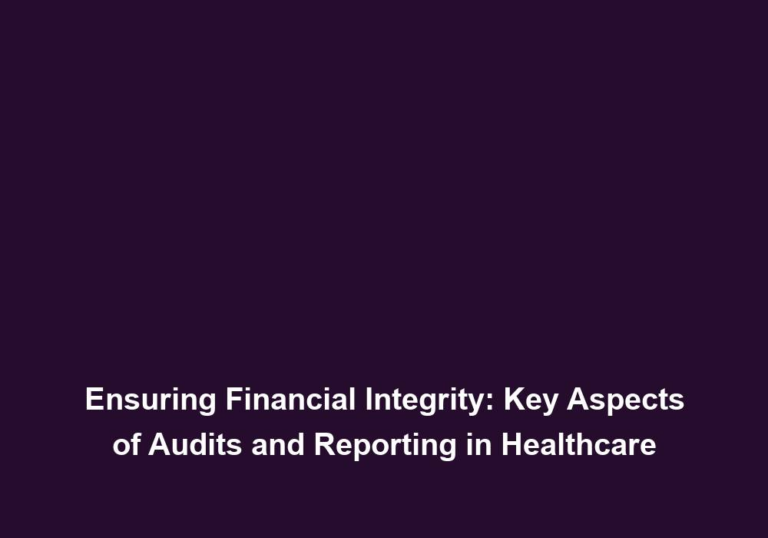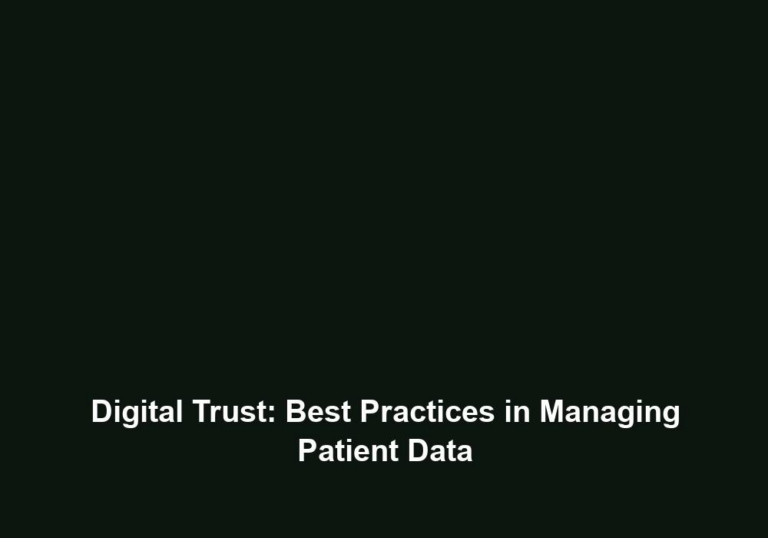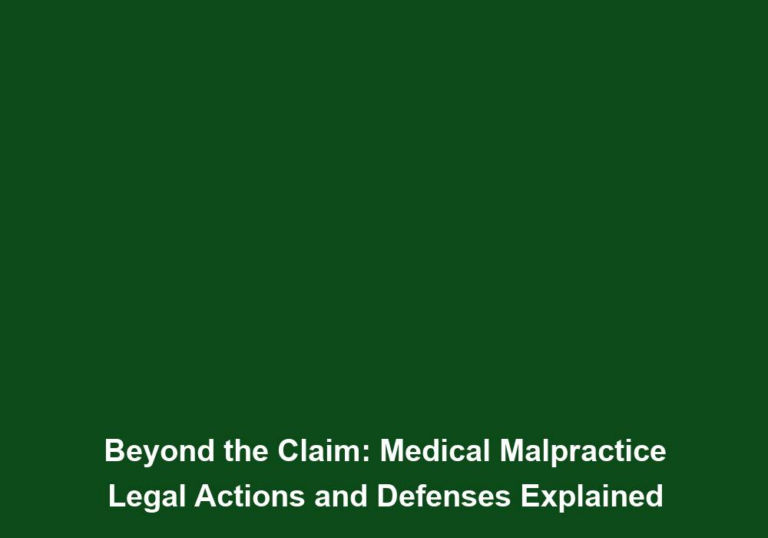Finance Meets Care: Navigating Financial Regulations and Compliance in Healthcare
In today’s evolving healthcare landscape, financial regulation and compliance play a crucial role in ensuring the stability and integrity of the industry. As the intersection of finance and care becomes increasingly complex, healthcare organizations must navigate a myriad of regulations to maintain financial transparency, protect patient data, and uphold ethical standards. This article delves into the challenges faced by healthcare providers in meeting financial regulatory requirements and offers insights into successful strategies for compliance.
The Importance of Financial Regulation in Healthcare
Financial regulation in the healthcare sector is essential for several reasons. Firstly, it ensures that healthcare organizations operate ethically and transparently, promoting accountability and responsible financial management. This is crucial in maintaining public trust and confidence in the healthcare system. Secondly, it safeguards patient data and privacy, ensuring that sensitive information is protected from unauthorized access or misuse. By implementing secure systems, policies, and procedures, healthcare providers can create a secure environment for patient information, giving patients peace of mind. Thirdly, financial regulation helps prevent fraud, waste, and abuse, ensuring that healthcare resources are allocated efficiently and equitably. This ensures that healthcare funds are used for their intended purpose – providing quality care to patients.
Key Financial Regulations Affecting Healthcare Providers
To effectively navigate financial regulation in healthcare, organizations must be familiar with the key regulations that impact their operations. Here are some of the most significant regulations:
1. Health Insurance Portability and Accountability Act (HIPAA)
HIPAA is a federal law that safeguards patient health information and ensures its confidentiality. Healthcare providers must implement secure systems, policies, and procedures to protect the privacy and security of patient data, including electronic health records (EHR). Compliance with HIPAA is critical to avoid hefty penalties and reputational damage. Organizations should conduct regular risk assessments to identify vulnerabilities in their systems and develop robust security measures to mitigate risk. This includes encrypting data, implementing access controls, and training staff on HIPAA regulations.
2. Affordable Care Act (ACA)
The ACA, also known as Obamacare, introduced a range of financial regulations aimed at improving accessibility, affordability, and quality of healthcare. This includes regulations related to insurance coverage, medical billing and coding, fraud prevention, and reporting requirements. Healthcare providers must stay up-to-date with ACA provisions to ensure compliance. They should regularly review their billing and coding practices to ensure accuracy and compliance with ACA guidelines. It is also important to implement strong internal controls to prevent fraud and abuse.
3. Stark Law and Anti-Kickback Statute
The Stark Law and Anti-Kickback Statute are federal laws that prohibit inappropriate financial relationships between healthcare providers and entities referring patients or receiving healthcare services. These regulations aim to eliminate conflicts of interest, prevent overutilization of services, and maintain the integrity of healthcare decisions. To comply with these regulations, healthcare organizations should establish clear policies and procedures regarding financial relationships, conduct regular audits to identify potential violations, and educate staff on the implications of these laws. They should also carefully review any financial arrangements to ensure compliance with the Stark Law and Anti-Kickback Statute.
4. Medicare and Medicaid Regulations
Medicare and Medicaid are government-funded healthcare programs that provide insurance coverage for specific populations. Healthcare providers participating in these programs must comply with a range of regulations, including billing and coding requirements, claims submission processes, and documentation standards. To ensure compliance, healthcare organizations should invest in training and education for staff involved in billing and coding. They should also implement robust internal controls to ensure accurate claims submission and documentation. Regular audits and reviews should be conducted to identify and rectify any compliance issues.
5. Internal Revenue Service (IRS) Regulations
The IRS imposes regulations specific to tax-exempt healthcare organizations, such as non-profit hospitals. Compliance with IRS regulations is crucial for maintaining tax-exempt status and ensuring transparent financial reporting. Healthcare organizations should establish policies and procedures to ensure compliance with IRS regulations, including proper documentation of financial transactions and adherence to reporting requirements. It is also important to conduct regular internal audits to identify any potential non-compliance and take corrective actions promptly.
Strategies for Successful Financial Regulation and Compliance
Navigating financial regulation and compliance in healthcare requires a systematic and proactive approach. Here are some strategies to help organizations achieve success in this complex landscape:
1. Establish a Compliance Program
Developing a comprehensive compliance program is the first step towards successful financial regulation and compliance. This program should include policies and procedures that address key regulatory requirements, as well as staff training and monitoring to ensure adherence. Regular audits and assessments should also be conducted to identify and rectify any compliance gaps. Organizations should designate a compliance officer or team to oversee the program and ensure its effectiveness.
2. Invest in Technology and Data Security
With the increasing digitization of healthcare, investing in robust technology systems and data security measures is paramount. Implementing electronic health record systems, encrypted communication platforms, and access controls can help protect patient data and ensure compliance with HIPAA and other relevant regulations. Regular cybersecurity audits should be conducted to identify vulnerabilities and enhance data protection measures. It is also important to have a disaster recovery plan in place to mitigate the impact of potential data breaches or system failures.
3. Collaborate with Legal and Compliance Experts
Engaging legal and compliance experts with in-depth knowledge of healthcare regulations can provide valuable insights and guidance. These professionals can assist in interpreting complex regulations, identifying potential compliance risks, and recommending best practices. Seeking their expertise can help healthcare organizations stay ahead of the evolving regulatory landscape. It is important to establish a strong relationship with legal and compliance experts and involve them in the decision-making process to ensure compliance at every level of the organization.
4. Continuous Staff Training and Education
Regular training and education for staff members are crucial to ensure understanding and compliance with financial regulations. Healthcare organizations should provide ongoing training on topics such as HIPAA, coding and billing regulations, and fraud prevention. This empowers staff members to make informed decisions and reduces the likelihood of inadvertent non-compliance. Training should be tailored to the specific roles and responsibilities of each staff member, and regular refresher courses should be provided to keep them up-to-date with the latest regulatory changes.
5. Monitor Regulatory Updates
Healthcare regulations are subject to frequent updates and revisions. Staying informed about the latest regulatory changes is essential for maintaining compliance. Subscribing to industry newsletters, attending conferences, and participating in relevant professional associations can help healthcare organizations stay abreast of new regulations and adapt their practices accordingly. It is important to designate a team or individual responsible for monitoring regulatory updates and communicating any changes to relevant stakeholders within the organization. This proactive approach ensures that the organization can promptly adjust its policies and procedures to remain compliant.
In conclusion, navigating financial regulation and compliance in healthcare is a multidimensional challenge. By prioritizing transparency, privacy, and ethical financial practices, healthcare organizations can successfully navigate the complex landscape of financial regulation. Implementing comprehensive compliance programs, investing in technology and data security, collaborating with legal and compliance experts, providing staff training, and staying informed about regulatory updates are key strategies for ensuring compliance and upholding the highest standards of financial integrity in healthcare.







